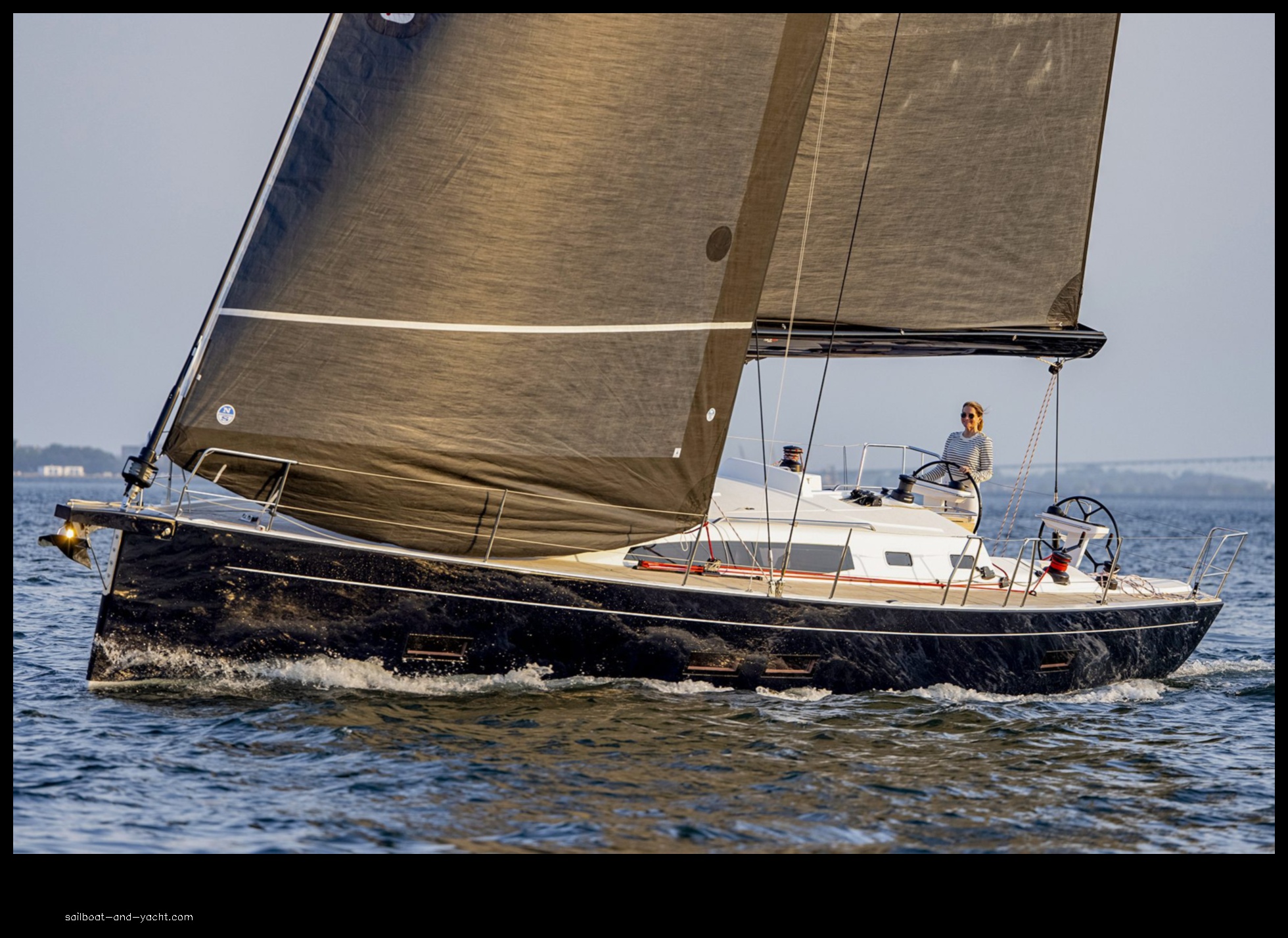
I. Introduction
II. History of J Boats
III. Different Types of J Boats
IV. J Boat Specifications
V. J Boat Performance
VI. J Boat Sailing
VII. J Boat Racing
VIII. J Boat Maintenance
IX. J Boat Ownership
X. FAQ
| Topic | Features |
|---|---|
| J Boats |
|
| Sailboats |
|
| Sailing |
|
| Yachting |
|
| Cruising |
|
II. History of J Boats
J-class yachts are a type of racing yacht that were designed in the early 1900s. They are known for their speed and elegance, and are often used in competitive sailing events.
The first J-class yacht was designed by Nathanael Herreshoff in 1901. It was called the “Shamrock III” and was built for Sir Thomas Lipton. The Shamrock III won the America’s Cup in 1903, and it was the first J-class yacht to do so.
Over the next few decades, a number of other J-class yachts were built. These yachts were used in the America’s Cup races, and they were also used in other competitive sailing events.
In the 1930s, the J-class yachts were no longer competitive in the America’s Cup races. They were replaced by smaller and more modern yachts. However, the J-class yachts continued to be used in other competitive sailing events.
In the 1980s, a number of J-class yachts were restored. These yachts were used in the America’s Cup races, and they were also used in other competitive sailing events.
Today, there are a number of J-class yachts still in existence. These yachts are used in competitive sailing events, and they are also used for pleasure sailing.

III. Different Types of J Boats
There are many different types of J boats, each with its own unique characteristics. Some of the most popular types of J boats include:
- The J-24 is a single-handed racing yacht that was designed in 1957. It is a popular choice for sailors of all levels, and is often used in competitive sailing events.
- The J-35 is a two-handed racing yacht that was designed in 1967. It is a popular choice for families and couples, and is also often used in competitive sailing events.
- The J-44 is a three-handed racing yacht that was designed in 1977. It is a popular choice for experienced sailors, and is often used in competitive sailing events.
- The J-52 is a four-handed racing yacht that was designed in 1987. It is a popular choice for experienced sailors, and is often used in competitive sailing events.
- The J-64 is a five-handed racing yacht that was designed in 1997. It is a popular choice for experienced sailors, and is often used in competitive sailing events.
Each of these types of J boats has its own unique characteristics, and is suited for different types of sailors. For more information on the different types of J boats, please visit the following websites:

IV. J Boat Specifications
J boats are typically between 40 and 50 feet in length, and have a displacement of between 20 and 30 tons. They are typically made of wood or fiberglass, and have a ketch or yawl rig. J boats are designed for racing, and are known for their speed and handling.
The following table lists the specifications of some of the most popular J boats:
| Boat | Length | Displacement | Rig |
|---|---|---|---|
| J-1 | 42 feet | 22 tons | Ketch |
| J-2 | 44 feet | 24 tons | Yawl |
| J-3 | 46 feet | 26 tons | Ketch |
| J-4 | 48 feet | 28 tons | Yawl |
| J-5 | 50 feet | 30 tons | Ketch |
J boats are a popular choice for racing sailors, and they are also used for cruising and chartering. They are well-built and seaworthy, and they offer excellent performance in a variety of conditions.

V. J Boat Performance
J boats are known for their speed and performance. They are typically designed to be light and fast, and they are often used in competitive sailing events.
The performance of a J boat can be affected by a number of factors, including the design of the boat, the weight of the boat, the wind conditions, and the skill of the crew.
J boats are typically designed to be as light as possible without sacrificing strength or durability. This is done in order to reduce the amount of drag that the boat experiences in the water.
The weight of the boat is also a factor that can affect its performance. A lighter boat will be faster than a heavier boat, all other things being equal.
The wind conditions can also have a significant impact on the performance of a J boat. In light winds, a J boat will be able to sail faster than in heavy winds.
The skill of the crew is also a factor that can affect the performance of a J boat. A crew that is well-trained and experienced will be able to sail a J boat faster than a crew that is less experienced.
Overall, J boats are known for their speed and performance. They are typically designed to be light and fast, and they are often used in competitive sailing events.
VI. J Boat Sailing
J boats are designed for sailing in a variety of conditions, from light winds to heavy weather. They are typically sailed with a crew of six to eight people, and can reach speeds of up to 20 knots. J boats are known for their exhilarating sailing experience, and are often used in competitive sailing events.
Here are some tips for sailing a J boat:
- Be prepared for a physical challenge. J boats are powerful and fast, and require a strong crew to sail them effectively.
- Learn the basics of sailing. Before you take a J boat out on the water, make sure you have a good understanding of the basics of sailing, such as how to tack and jibe.
- Be aware of your surroundings. J boats are large and powerful, and can easily cause damage if you are not careful. Be aware of other boats and objects in your vicinity, and always give them a wide berth.
- Have fun! J boats are a great way to enjoy the sailing experience. So relax, enjoy the scenery, and let the wind take you away.
VII. J Boat Racing
J Boat racing is a popular sport that is enjoyed by sailors all over the world. J Boats are known for their speed and agility, and they are often used in competitive racing events. There are a number of different J Boat racing classes, each with its own set of rules and regulations.
Some of the most popular J Boat racing classes include the J/70, the J/80, and the J/120. These classes are typically raced in one-design format, which means that all of the boats in the class are identical. This level of competition makes J Boat racing a very challenging and exciting sport.
J Boat racing is also a great way to meet new people and make friends. The J Boat community is a close-knit group of people who share a passion for sailing. Whether you are a seasoned racer or a complete beginner, there is a place for you in the J Boat racing community.
If you are interested in learning more about J Boat racing, there are a number of resources available online. You can find information about upcoming races, class rules and regulations, and how to get started racing a J Boat. You can also find a list of J Boat racing clubs and associations that can help you get involved in the sport.
J Boat Maintenance
J boats are a type of racing yacht that require regular maintenance in order to stay in top condition. Here are some tips for maintaining your J boat:
*
Regularly clean and wax the hull to protect it from the elements.
*
Inspect the rigging and sails for any damage and repair as needed.
*
Check the engine and fuel system regularly and make sure they are operating properly.
*
Keep the interior of the boat clean and organized.
*
Store the boat in a dry, protected location when it is not in use.
By following these tips, you can help to keep your J boat in top condition and enjoy many years of sailing pleasure.
IX. J Boat Ownership
J boats are a significant investment, and it is important to consider all of the costs involved before purchasing one. These costs include the purchase price of the boat, maintenance costs, insurance costs, and mooring costs. It is also important to consider the time and effort required to maintain and sail a J boat.
If you are considering purchasing a J boat, it is important to do your research and make sure that you are making an informed decision. There are many resources available online and through sailing clubs that can help you learn more about J boats and the costs involved in owning one.
Here are some of the benefits of owning a J boat:
- J boats are known for their speed and performance. They are a great choice for racing or cruising.
- J boats are well-built and durable. They can withstand the rigors of sailing in all conditions.
- J boats are a great way to meet new people and make friends. Sailing is a social activity, and J boats are often found at regattas and other sailing events.
Here are some of the challenges of owning a J boat:
- J boats are expensive to purchase and maintain.
- J boats require a lot of time and effort to maintain and sail.
- J boats are not suitable for everyone. They are a challenging boat to sail, and they require a certain level of experience and skill.
If you are considering purchasing a J boat, it is important to weigh the benefits and challenges carefully before making a decision. If you are prepared for the challenges, a J boat can be a rewarding and enjoyable investment.
X. FAQ
Q: What is a J boat?
A: A J boat is a type of racing yacht that was designed in the early 1900s. They are known for their speed and elegance, and are often used in competitive sailing events.
Q: What are the different types of J boats?
A: There are four main types of J boats: the J-1, J-2, J-3, and J-4. The J-1 is the smallest and lightest type of J boat, while the J-4 is the largest and heaviest.
Q: How much does a J boat cost?
A: The cost of a J boat can vary depending on the size and condition of the boat. A new J-1 can cost around $100,000, while a used J-4 can cost upwards of $1 million.
- What Happened to Bluewater Yachts? The Inside Story - May 31, 2024
- Upgrade Your Boat’s Water Pump to the Mach 5 - May 30, 2024
- Upgrade Your Boat with the Big Stuff Stuffing Box - May 30, 2024


